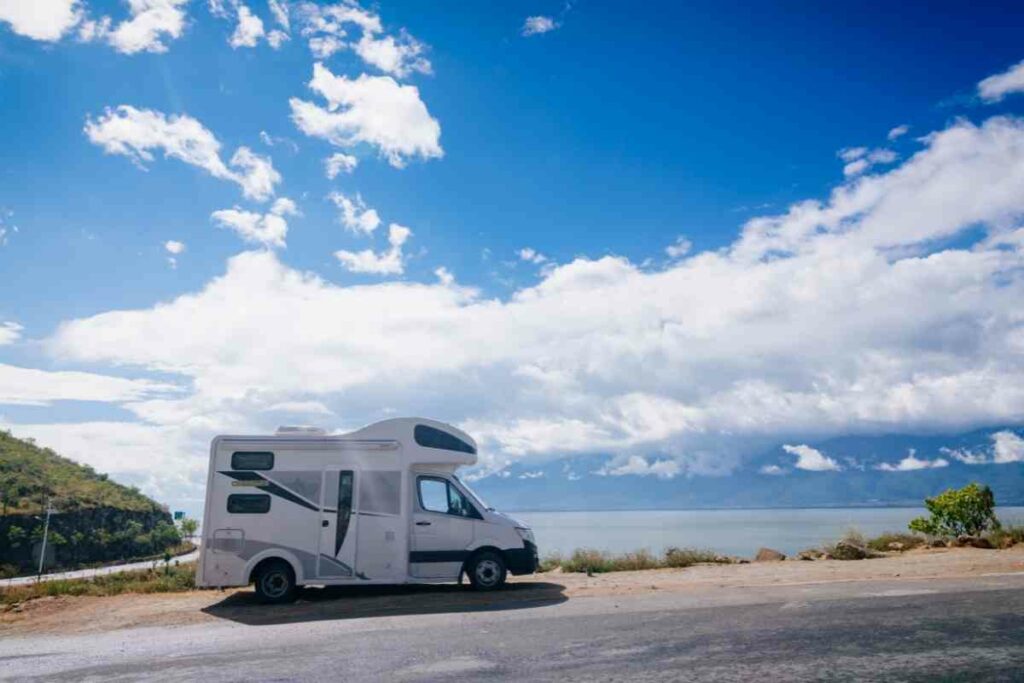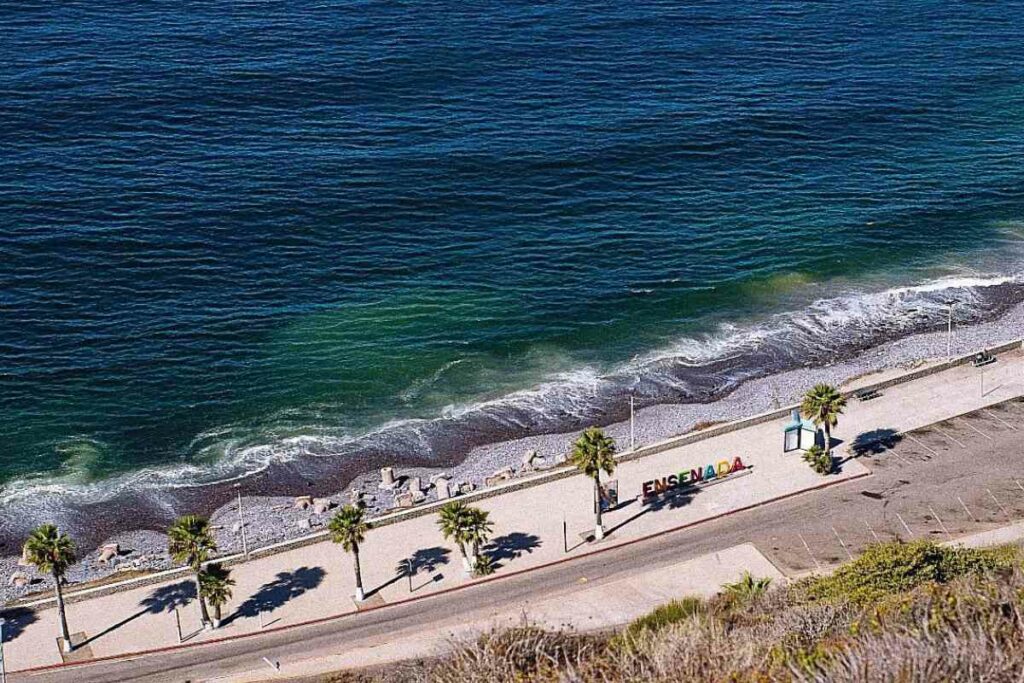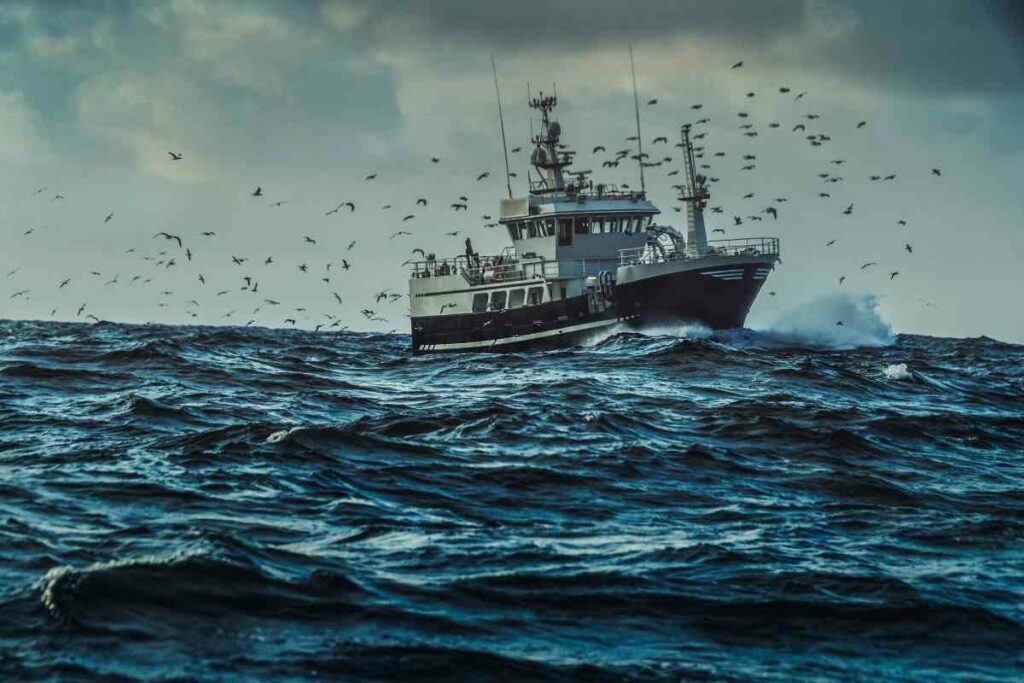Hawaii is a gorgeous, green, sunshine-abundant island in the Pacific.
If you’re planning on paying this idyllic island a visit, you’ll probably want to know a bit about the local wildlife.
There’s plenty of lovely fauna, including the colorful Jackson’s Chameleon and the Monk Seal. However, there are also several animals you’ll want to avoid in Hawaii. These may be toxic, aggressive, or both.
While Hawaii is a fairly safe place, keeping an eye out (thanks to just a bit of know-how) can save you injury, leaving you free to explore and relax.
Learn more below!
1. Crown of Thorns Starfish
Since there are over 100 beaches in Hawaii, it only makes sense that many of the animals would be tide pool dwellers.
While most starfish are relatively harmless (although you still shouldn’t touch), there is one variety, called the Crown of Thorns Starfish, that’s actually a danger.
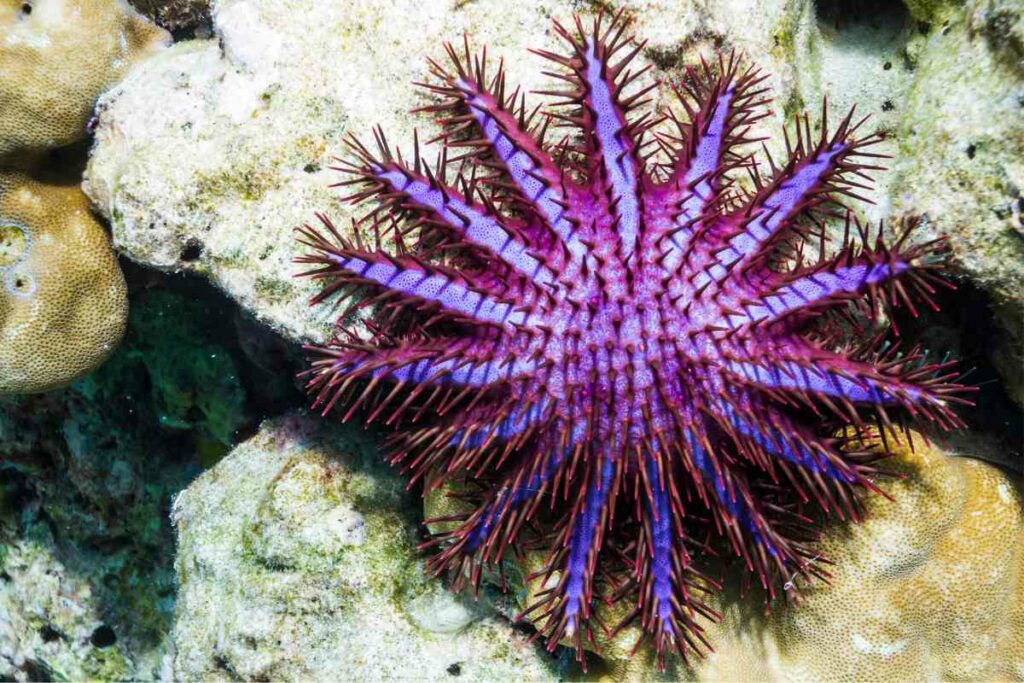
In fact, these starfish are all-around unpleasant. They cause huge damage to coral reefs -including the Great Barrier Reef- whenever there’s an outbreak!
So, they’re a known threat to the coral reefs, which is unfortunate in and of itself. How about the effect of the infamous Crown of Thorns Starfish on people?
And how can you recognize them?
The Crown of Thorns Starfish looks similar to a sea urchin, and fortunately, is hard to mistake with something you can touch.
This is thanks to the many long spines that coat their body – they look like nothing so much as a sea cactus.
If you’re unfortunate enough to come in contact with one, not only will you get a good prick, but the spines are quite venomous.
This venom causes a severe sting, as well as swelling and bleeding that last up to 3 hours – not exactly most folk’s idea of a good vacation. Since they live in reefs, keep your eyes peeled for these rather nasty critters around coral!
2. Cone Snail
Next on this list of creatures to avoid Hawaii, we have the notorious Cone Snail.
These fellows are best-known not because they are venomous (which they are, very), but rather their appearance.
These shells are conical, with a spire of whorls that create a rough texture, and a smooth and graceful body.
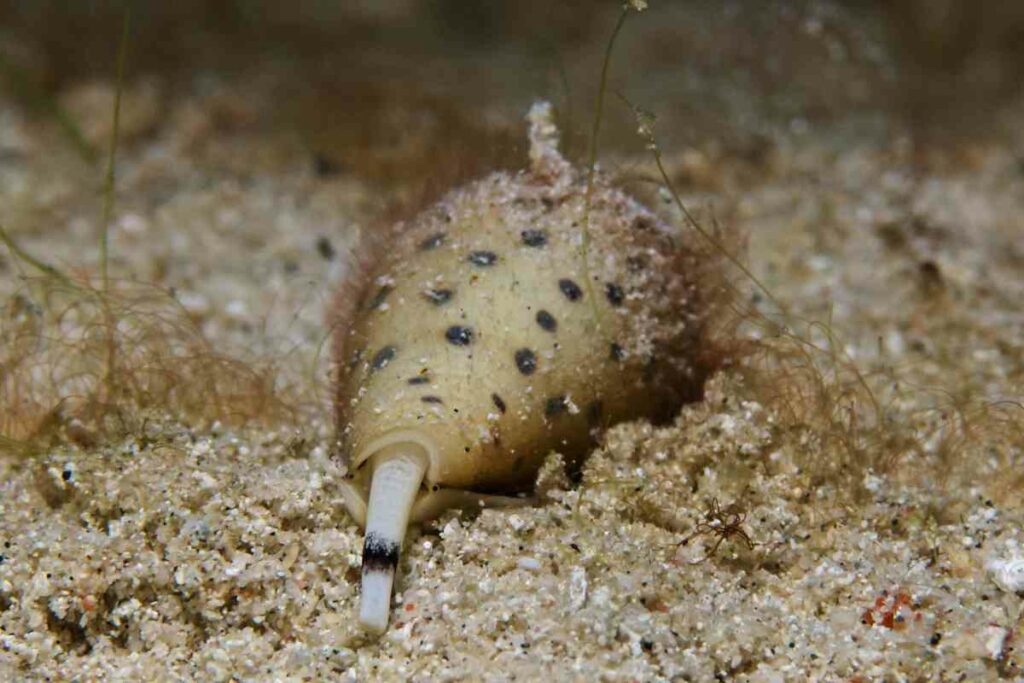
They have also been said to resemble ice cream cones in shape. Not only that, but they come in a variety of lovely patterns and hues. Their predominant colors are orange, brown, and yellow, in various markings.
Cone Snails are not land snails, but water snails, and you will certainly find them in Hawaii.
Your first thought may be to try to collect the shells, but you’ll want to resist the urge unless you’re absolutely certain the shell is empty.
Why?
Because Cone Snail venom has the hypothesized potential to kill up to 700 people.
A sting can result in paralysis and even death, without immediate medical intervention.
Cone Snails have what is called a proboscis, which is a tube which they stretch out and which is very flexible.
At the end of this tube is a venomous tooth. They shoot this at prey, predators, or the unwary foot or curious hand!
This is another animal to avoid in Hawaii that you can evade successfully as long as you keep an eye out around coral and coral reefs, under coral shelves, under rubble, or – usually by a coral reef – hidden in the sand!
3. Red Velvet Ants
The Red Velvet Ant is, in actuality, a kind of wasp. The red velvet ant is also given the rather ominous name of Cow Killer.
This name is a bit misleading, though, as you’ll find! Red Velvet Ants are found most often in open, sandy areas – so, plenty of areas in Hawaii.

The wasps themselves, true to their name, are a distinctive bright red in color. However, they do not create invasive nests, so even in yards, preventative measures are typically not necessary.
This is because Red Velvet ants aren’t actually dangerous – but you’ll still want to make sure not to give them any chance to sting you.
They are dubbed Cow Killers not because they could actually kill a cow, but rather, because the pain seems strong enough to kill a cow.
Not a bug you’d want to come in contact with, and a good reason to wear closed-toe shoes if you plan to go at all off-trail!
4. Wild Pigs
There are no big cats or bears in Hawaii. There aren’t even native snakes.
In their place, however, Hawaii has Wild Pigs. While these may not sound too dangerous, the opposite is in fact true.
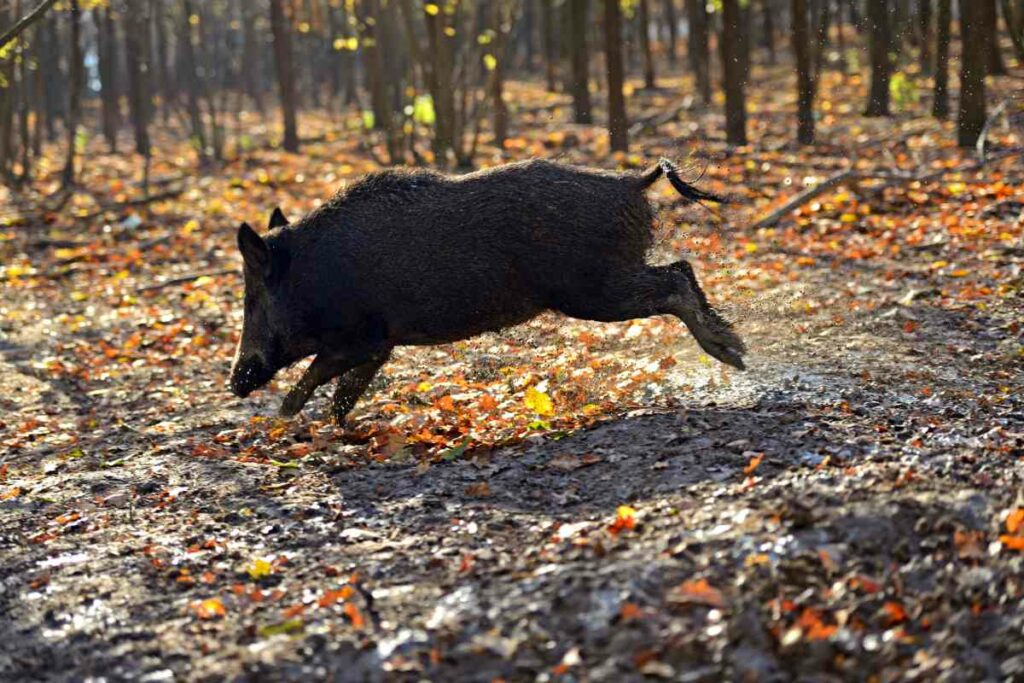
Feral pigs are easily spooked and naturally aggressive (especially the mothers), with sharp hooves and tusks that can do some real damage if given the chance.
Fortunately, Wild Pigs are easier to evade than wild cats and bears, as they are not actually predatory.
In fact, Wild Pigs are fairly fearful, and will likely avoid you themselves. If a wild pig or group of Wild Pigs approaches you, run, and climb up a tree if you can. If you are attacked, fight back and you should be able to scare the pig off!
5. Moray Eel
Moray Eels are rather intimidating, as far as eels go. They may not be able to shock you, like an electric eel, and they’re not venomous, technically.
Instead, the greatest danger of a Moray Eel bite is posed by the bite itself.
While many of these eels are small and reclusive, some can reach 5 feet or more (some rarer types even reach up to 11.5 feet – a bit intimidating, indeed!).
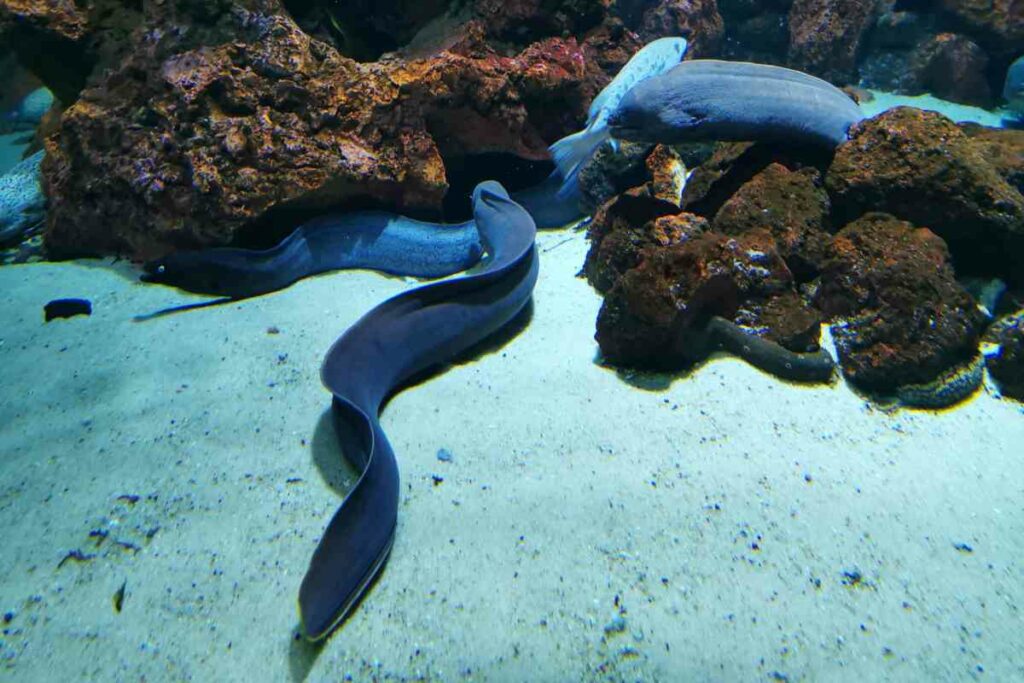
You can recognize a moray eel by their lack of pectoral fins. They lack scales and have soft, slimy skin that is easily damaged by touch. Some kinds come in bright colors, and are rather beautiful!
Unfortunately, Moray Eels aren’t considered safe or friendly. This is because, while they aren’t inherently aggressive (they mostly hide, don’t worry overmuch), their bites can be rather serious.
This isn’t due to any venom – instead, the bites leave you open to serious infections, and may require stiches. Like many amphibious Hawaiian water creatures, Moray Eels tend to hang out around reefs and coral.
So, make sure it’s all clear before you enter the water. Also, try not to step near any shadowed, secluded areas that might hold a Moray Eel lair!
6. Yellow-Bellied Sea Snake
The bite of the Yellow-Bellied Sea Snake, as with most water snakes, is highly poisonous.
This poison is potentially deadly and causes paralysis. This is not only dangerous in and of itself but can result in the swimmer afflicted with the bite drowning.
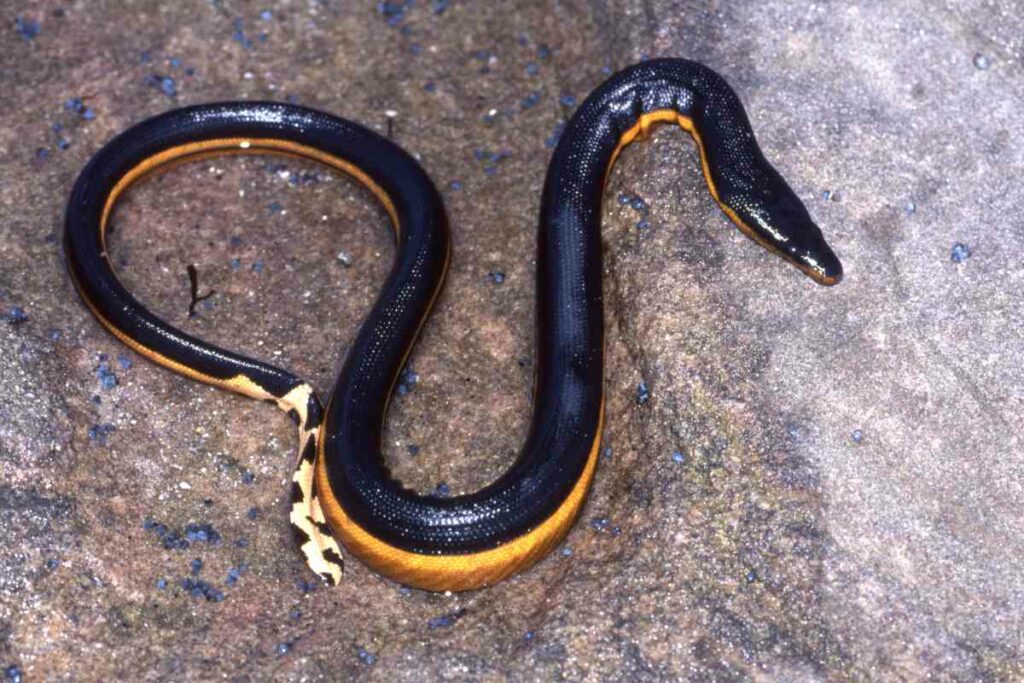
While you should avoid all water snakes, you can recognize the Yellow-Bellied Water Snake by – true to its name – their bright yellow belly and brown back.
If you see a water snake, make sure to leave the water quickly. While yellow-bellied water snakes are not inherently aggressive, they may bite once or even a few times if they feel threatened!
Now, don’t come away from this page feeling afraid to explore Hawaii.
Many of these animals to avoid Hawaii are easy enough to evade successfully, as long as you remember their appearance and where they tend to hang out. This will go a long way.
Also keep in mind how to react if one does happen to show aggression (for example, a wild pig).
Conclusion
Finally, making sure to show respect (i.e. avoiding and not touching) to any animal you encounter will help ensure a positive experience overall!



